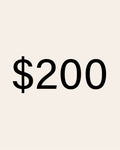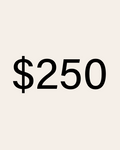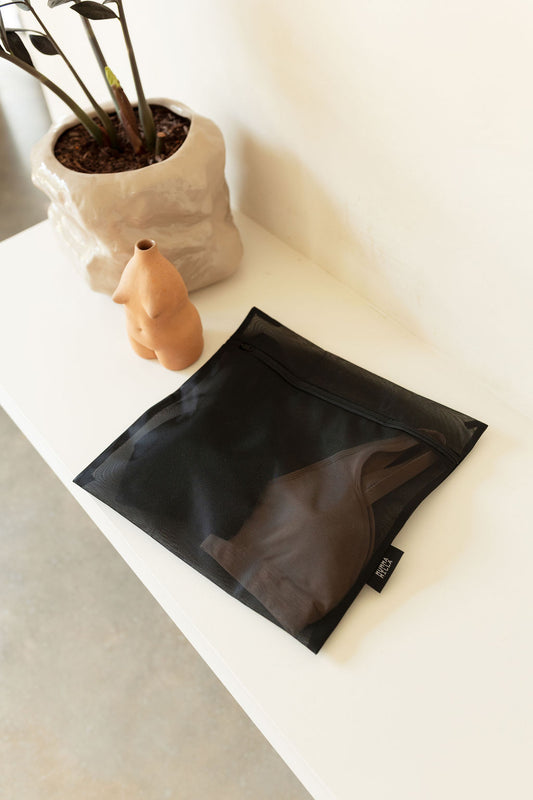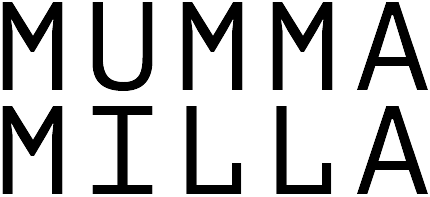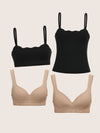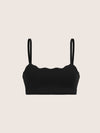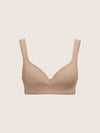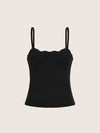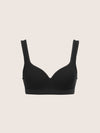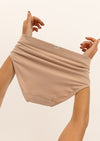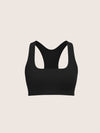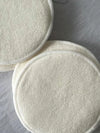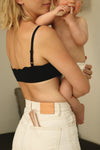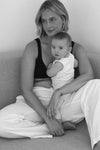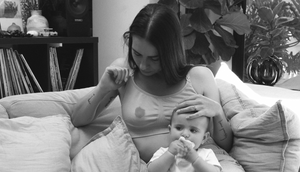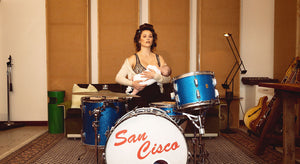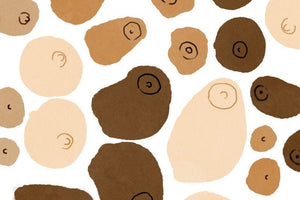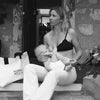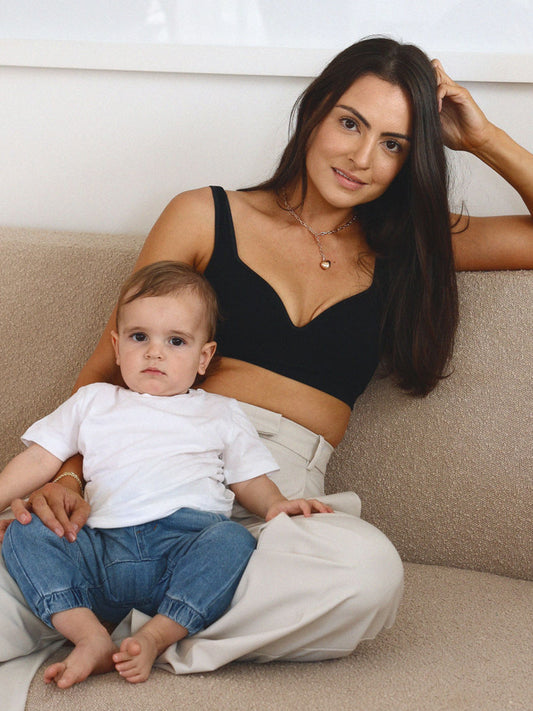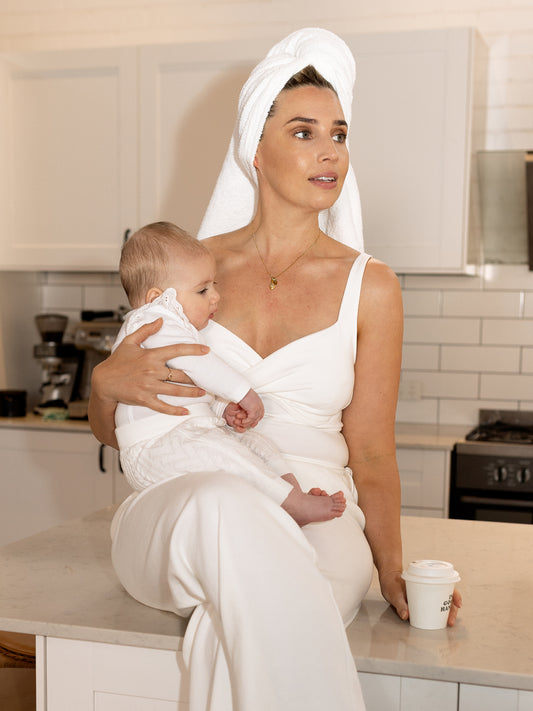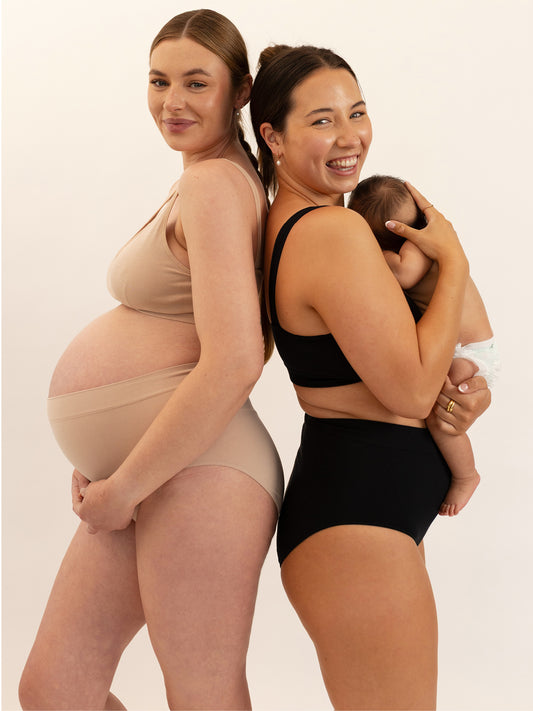We welcome Siobhan Lenihan to M. Magazine.
Siobhan is a Pelvic Health (Women’s Health) Physiotherapist and explains the Do's and Dont's for Mastitis.
She loves supporting women through every stage of their lives - from menstruation,
pregnancy, postpartum and through to menopause and beyond. She's passionate about creating a safe, compassionate space for women to reconnect with their bodies and feel empowered in their pelvic health journey.
How do you help mums during pregnancy to postpartum?
During pregnancy, I support women with everything from pelvic girdle pain, back pain, bowel and bladder issues, to birth preparation. This includes optimising their pelvic floor function for support in pregnancy, birth and the fourth trimester, as well as teaching perineal massage (one of the most important things women can do in their third trimester!).
Being proactive with your pelvic floor and pelvic health is important even if you are not experiencing any symptoms. I would recommend seeing a Pelvic Health Physiotherapist initially at 16-18 weeks for a pelvic floor assessment.
I provide birth preparation appointments around 32-34 weeks to get you started on pelvic floor downtraining (relaxation), pelvic stretches, diaphragmatic breathing and perineal massage.
In the postpartum period, we focus on recovery and “rehabilitation” of the abdominals and pelvic floor. No matter what birth you had or if you are symptom free, book in to see a Pelvic Health Physiotherapist between weeks 4-6 after birth.
"The first few weeks (0-6 weeks) are all about healing, gentle movement and reconnecting with the body and the pelvic floor.
Optimising bladder and bowel function play a pivotal role in this time."
The biggest tips I can provide are: don’t strain, don’t rush, always answer your bowel urge and pee before you feed! We will then focus on abdominal muscle separation support, pelvic floor rehabilitation, managing prolapse symptoms, scar tissue massage (caesarean or episiotomy) and return to exercise and intimacy.
What are the main things you see pop up for mums after birth?
Some of the most common concerns I see include pelvic floor dysfunction
(whether due to weakness or tension), incontinence, constipation, pelvic heaviness
or pressure, pain with intercourse, abdominal separation, lower back or pelvic pain,
and mastitis.
"The demands on mums are huge, yet the support often is lacking.
There is such a noticeable shift from the care women receive during pregnancy to how little they receive postpartum.
Trying to recover physically while navigating fatigue, significant hormonal changes, emotional overwhelm, and caring for a newborn (and often other little ones too) can feel incredibly overwhelming. This is why I love helping women in their postpartum journey and take a holistic, whole-person approach. It is important to support both the physical and emotional aspects of their postpartum recovery.
What is mastitis?
Mastitis is now understood to be a spectrum of breast inflammation. According to the 2022 Australian Breastfeeding Medicine (ABM) guidelines, mastitis begins with local inflammation caused by mammary dysbiosis, immune response and ductal narrowing, and may progress to bacterial infection or abscess if untreated.
Mastitis is no longer just seen as "blocked ducts" or poor drainage, and instead it is seen as an inflammatory condition of the breast leading to duct narrowing (not blockage) and needs to be treated accordingly.
We'd love to hear the new guidelines on mastitis— what were the old methods that are no longer applicable?
The new guidelines shift the focus away from aggressive milk removal and massage. Previously, the belief was that mastitis resulted from a blocked duct and that the breast needed to be aggressively emptied, often with deep massage or excessive pumping.
The updated ABM protocol (#36) recognises that the breast inflammation causes the ducts to narrow, rather than “block”. And so, this changes the treatment approach: instead of forcing milk out, the focus is now on reducing inflammation. Forceful techniques can actually worsen symptoms by damaging tissue and increasing inflammation.
What are the first symptoms?
Initial signs include a tender, localised firm area of the breast. Soon swelling, redness, warmth, and sometimes shooting or burning pain can develop. These are signs of inflammation, and recognising them early is key to preventing progression to infective mastitis.
You might feel fatigued, feverish, or have chills - hormonal changes in the postpartum period (a low oestrogen state) can also cause sweating and hot flushes that may mimic fever symptoms, but keep an eye on them as they can also be a sign of infection.
What causes it?
Mastitis can result from stress, oversupply, skipped feeds, latch issues, excessive pumping or pressure on the breast from a poorly fitting bra or bra with underwire.
How does mastitis differ from a
blocked duct?
According to the ABM, what was once called a “blocked duct” is now understood to actually be ductal narrowing - where inflammation causes compression of the milk ducts, reducing flow. This is an early stage in the mastitis spectrum. If inflammation is not resolved, it can progress to full-blown mastitis with systemic symptoms like fever and body aches. The key difference is that ductal narrowing is not a separate issue, it is part of the inflammatory cascade leading into mastitis.
What are some of the worst things you
can do if you have mastitis?
Forceful / deep tissue massage (this can damage tissue and worsen inflammation)
Overfeeding or aggressive pumping “to empty the breast” - milk supply works on a supply-and-demand system - more milk removal leads to more milk production. Continuously feeding or pumping to "empty" the breast can overstimulate supply, leading to swelling and inflammation, and can actually make things worse.
Wearing poorly fitting bras (too tight) or underwire bras
Using saline soaks, castor oil and other topical products - they are ineffective and can cause tissue damage and worsen inflammation if used in excess
Ignoring your symptoms
Top tips for mastitis management?
First we want to reduce inflammation and pain.
Ice the breast for 10 minutes hourly
Take regular anti-inflammatories and pain relief - speak to your GP or pharmacist
See a Pelvic Health Physiotherapist for therapeutic ultrasound treatment - let the clinic know it’s for mastitis and they will prioritise booking you in on the day.
Also try these tips:
Wear soft, supportive bras with no underwire
Avoid deep tissue massage
Try gentle lymphatic drainage massage - light sweeping of the skin toward the armpit (see ABM protocol #36 figure 21 for a visual explanation on technique)
Feed your baby on demand and don’t aim to “empty” your breast
Feed from the unaffected breast first
If you need to use a pump, express milk at a frequency and volume that mimics your usual feeds
Minimise the use of nipple shields
Hand expressing
See your GP and a Lactation Consultant if your symptoms progress
How does a non-wire bra / comfy bra come into play whilst managing mastitis?
A wire-free, soft bra is key for helping to prevent and manage mastitis. Tight, structured bras can compress delicate breast tissue and narrow ducts further, worsening inflammation. A soft, comfortable bra allows for natural breast movement, easier feeding, and reduces the risk of “pressure points” that may worsen mastitis.
I love that Mumma Milla bralettes are wire-free and designed with comfort in mind
- such a supportive option for breastfeeding mums navigating the postpartum phase. And it is such a bonus that they are leakproof and beautifully designed!
My website: www.lenipelvicphysio.com.au
Instagram: @ leni_pelvicphysio
--
The article I refer to is: Academy of Breastfeeding Medicine Clinical Protocol #36: The Mastitis Spectrum, Revised 2022 https://www.bfmed.org/assets/ABM%20Protocol%20%2336.pdf
